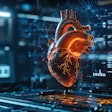The rapid growth of coronary CT angiography (CTA) dominated the field of CT in 2006. A growing number of research papers are demonstrating the value of coronary CTA for a wide range of clinical applications, and the technique seems poised to replace the use of conventional angiography for diagnostic use.

Aside from the turf issue, 2006 saw CT vendors and users begin discussing the next phase of CT development to follow the current generation of 64-slice technology. Vendors are approaching the next step from different directions.
One company, Siemens Medical Solutions, introduced its dual-source Somatom Definition system at the 2005 RSNA show that uses a dual set of x-ray tubes and detector assemblies. Sales of the unit began in the summer of 2006.
Another vendor, Toshiba Medical Systems, is developing a 256-slice system with clinical partners in Japan. Researchers have reported that the system is capable of a number of intriguing clinical applications, including 4D cardiac angiography and CT digital subtraction angiography (DSA). Toshiba will discuss the system as a work-in-progress at this year's meeting.
While the major multimodality vendors pursue high-end CT designs, a number of start-up firms are beginning to appear with systems targeted at niche applications. NeuroLogica of Danvers, MA, will again demonstrate the dedicated portable brain CT scanner that it introduced at the 2005 RSNA show, while RSNA newcomer Koning of West Henrietta, NY, will introduce a conebeam scanner designed for niche applications like breast imaging and extremity work.
These developments come as the U.S. CT market is experiencing healthy but not spectacular growth rates. The installed base of CT scanners has grown at an average annual rate of 4% since 2004, with the CT installed base in the U.S. consisting of 10,150 units in 2006 compared to 9,500 systems installed in 2004, according to an estimate by market research firm IMV Medical Information Division of Des Plaines, IL. IMV estimates that some 1,850 scanners will be sold in 2006.
Other technologies to keep an eye out for on the RSNA exhibit floor include devices for preventing allergic reactions in patients receiving contrast, a conebeam CT scanner for dental applications, and improvements in contrast injector technology.
Disclosure notice: AuntMinnie.com is owned by IMV, Ltd.




















